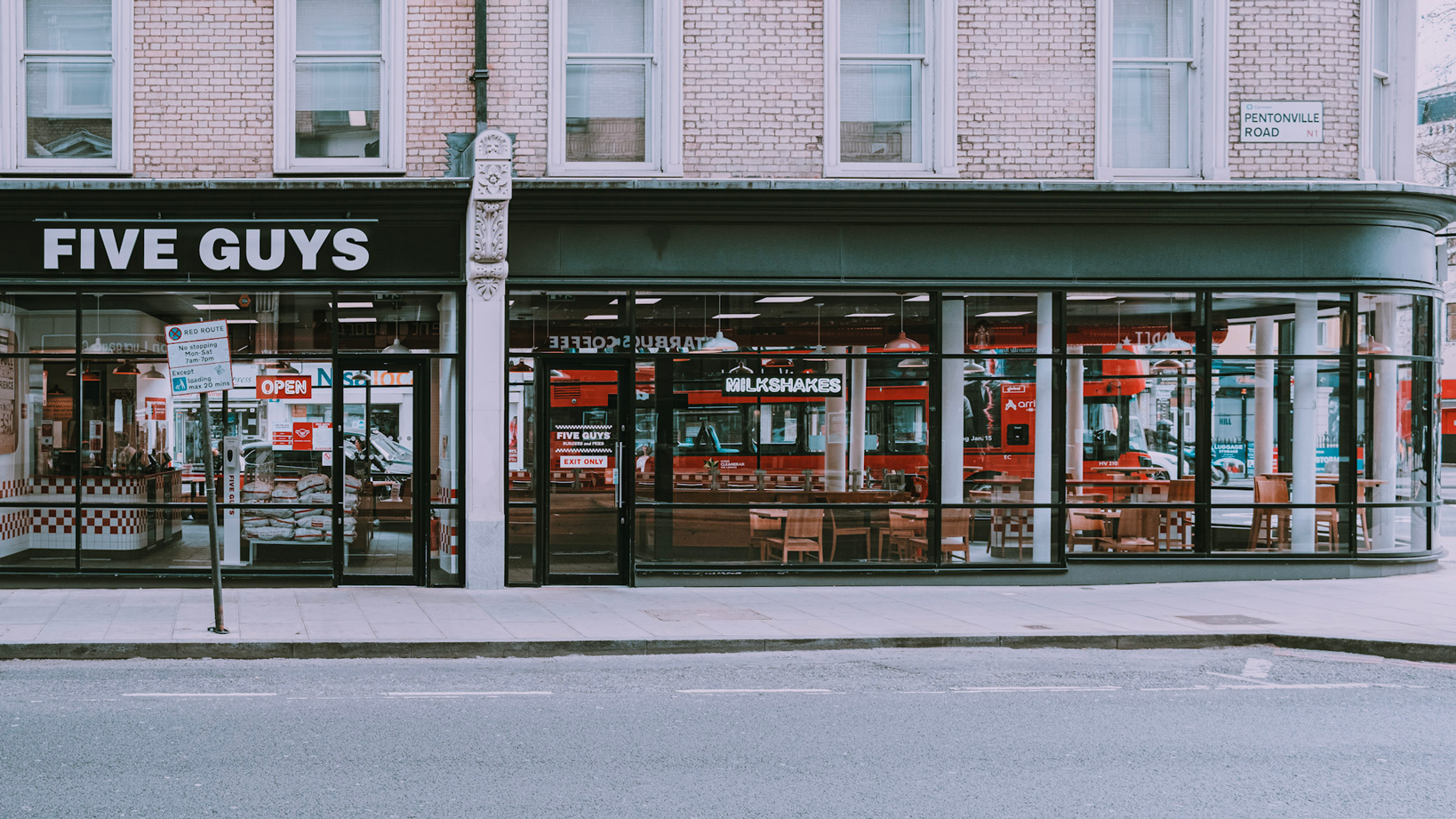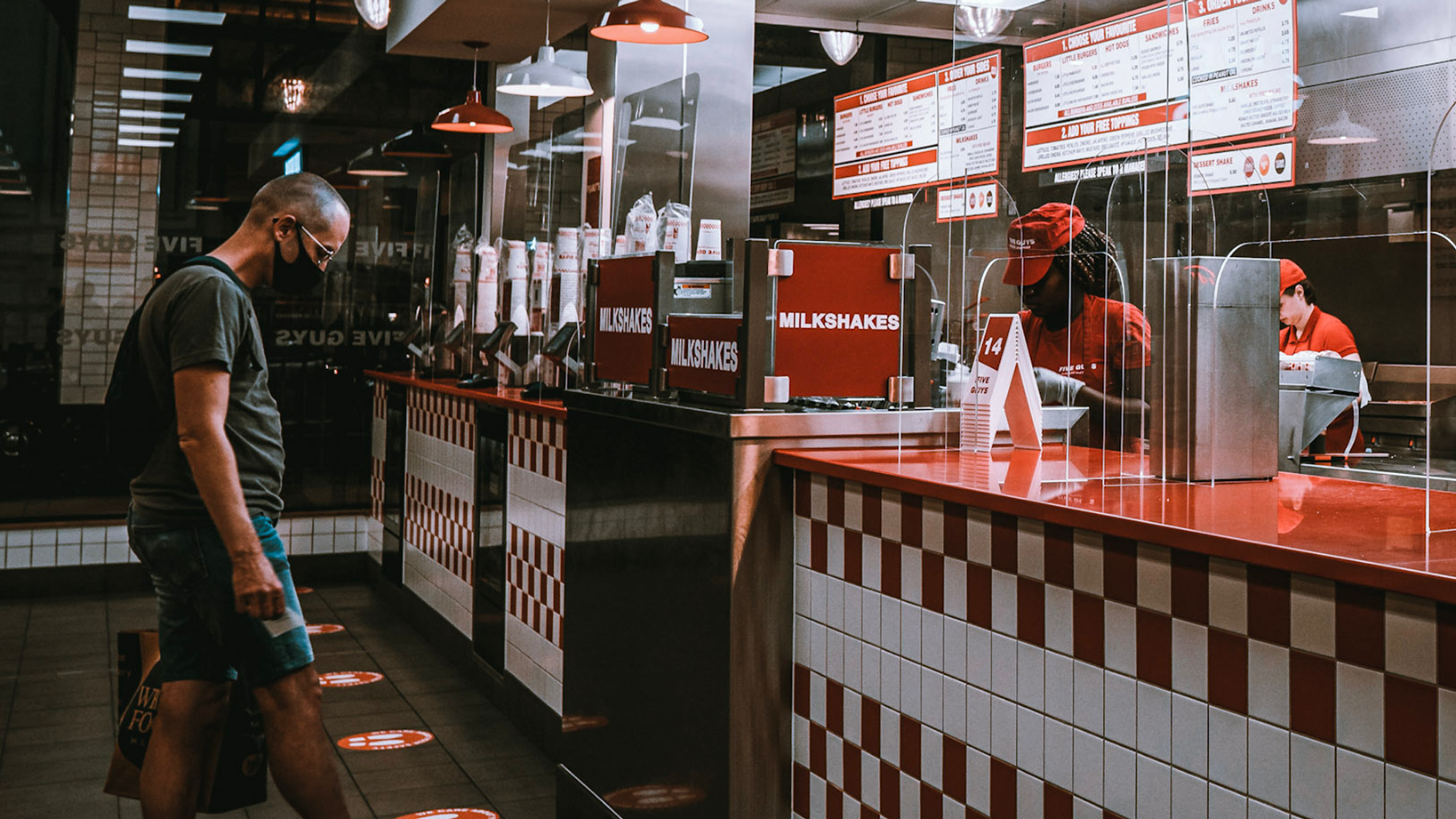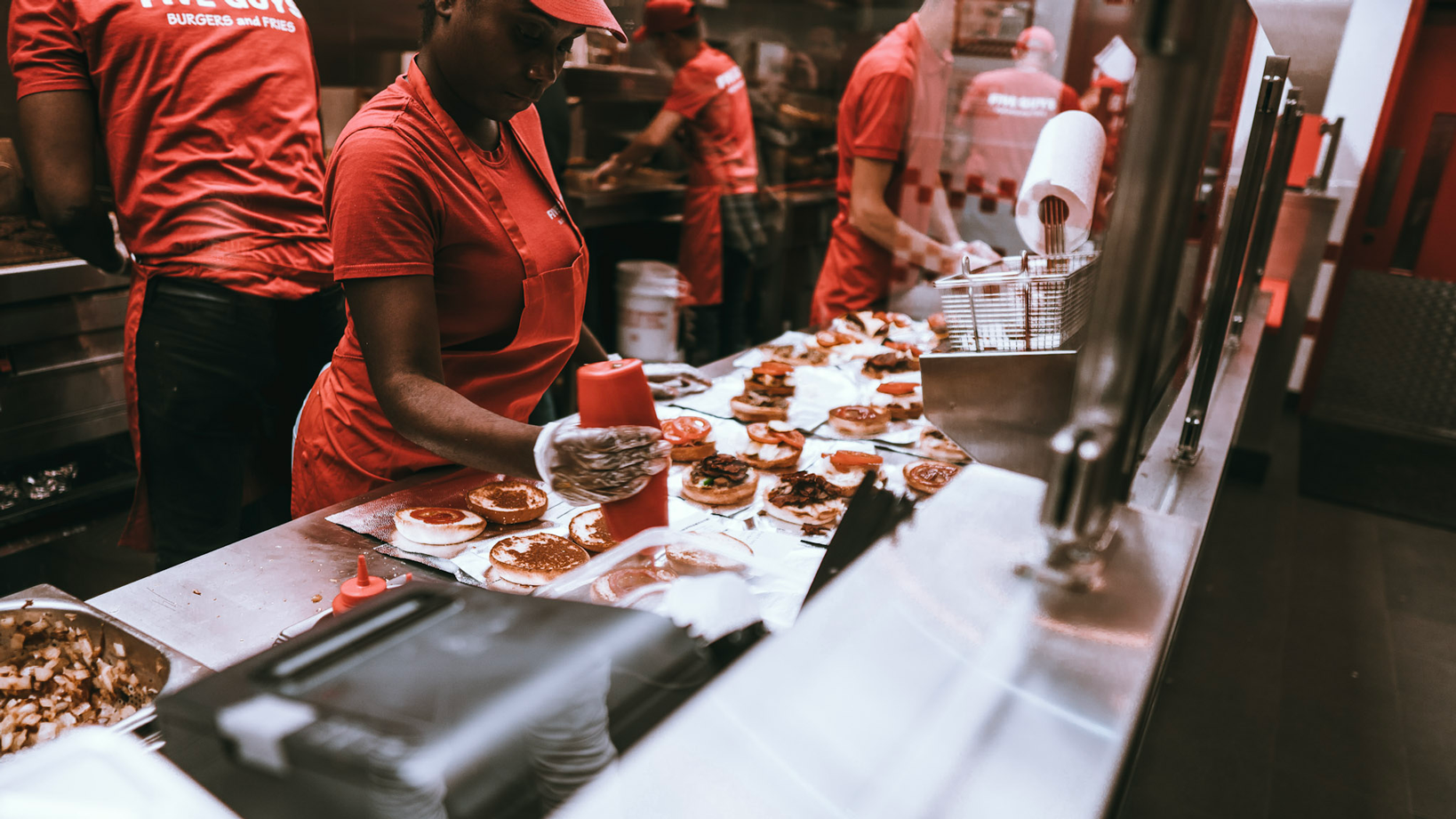To wrap up this month’s focus on individual retailers and restaurants and what they’re doing right, we want to take a closer look at one restaurant that is succeeding in the omnichannel space: Five Guys.
The burger joint known first and foremost as a brand built on customer service, not advertising, is the type of fast-casual restaurant whose brand is the quality of its food, with word of mouth being the force that allowed it to open 1,700 stores nationwide.
While Five Guys is known fairly well for its burgers and fries, many customers – and even competitors – don’t realize that its brand is also served heavily by its investments and experimentation in the realms of customer experience and convenience. Its other idiosyncratic features usually overshadow these efforts, but they are nonetheless cornerstones in the Five Guys brand.
Let’s look at four strategies that help Five Guys expand in a period where most fast-casual restaurants are contracting.
Cloud Computing for Better System Management
Most businesses use the cloud in some capacity, almost certainly for payroll and a few necessary IoT solutions. The benefits of using cloud computing for creating real-time customer insights is an obvious application of the technology. However, it has seen only occasional use in retail, much less fast-casual restaurants.
Five Guys analyzes their 1 million transactions per week in real-time by having all of their on-the-ground systems linked to their cloud, allowing for corrections in potential issues of loss as they happen. Integration and Data Warehouse Manager Fareldia Jefferies says that the technology “makes it far easier to rectify any issues, which was previously a manual process, where guys had to go through loads of invoices on a line-by-line basis, to check for those differences in purchase and invoice prices.”
Leveraging Data Gathered By Their Point-of-Sale System
Every Five Guys location has a modern POS system centered around the “data first” idea that has equipped so many other brands with useful customer insights.
Data isn’t just something to populate their monthly reports – it helps them manage to staff more accurately, identifying regional trends, and reduce waste such as plastic straws, paper bags, and cups. That reduces its impact on the environment and lowers its overall costs.
Mobile Ordering for Driving Traffic
What really puts Five Guys among giants like Panera Bread and Starbucks is its emphasis on its mobile app for ordering beforehand. This is a feature that many mid-sized fast-casual restaurants, such as Which Wich and Blaze Pizza, have employed in the past, but not to the same extent as Five Guys.
Mobile ordering for Five Guys accounts for a growing segment of repeat customers and increases the size of orders by twenty-five percent. The features of their app also allow for GPS searching of nearby stores and offer suggestions for orders, much like the kiosks in McDonald’s stores.
Mobile Ordering for Collecting Data
Now the pattern emerges – Five Guys is big on data. It makes sense that, in a sense, all roads lead to Rome – for Five Guys, streamlining the customer experience is also the best opportunity for additions that collect more data. Yes, Five Guys is indeed a brand built on customer service. But it does that through data – which is exactly what mobile ordering allows them to do.
By asking customers to sign up for the added convenience of mobile ordering, Five Guys can build strong customer profiles that go beyond a customer loyalty program. A mobile app is the best conduit in which a company can collect data. The mobile device is the extension of a customer – they never leave home without it, and 75% of user activity on the Internet is done through a mobile device.
What exactly can a mobile app gather from a phone? Quite a lot, in fact. Social media accounts the user has, location tracking, network type, and general app activity is all info that a mobile app can collect. Whether or not Five Guys is using the full potential of their app is unclear – if they aren’t, they could be missing out on a major opportunity for targeted marketing.
The Future of Five Guys
If we were to make suggestions for Five Guys, building up their in-store networking could help with engaging customers that aren’t using their app. Though they are collecting useful data from mobile devices, having touchpoints within the store is the next logical step. Touchpoints that can interact with a user’s mobile phone would in fact encourage downloads and use of their app – capturing the segment of sit-down diners that they are currently missing.
Speaking of touchpoints and kiosks, these cornerstones of the customer journey would do well in a fast-casual setting. Many companies with physical locations are putting kiosks on-site for a more seamless experience – notably with the convenience chain Wawa. Five Guys too could capitalize on the demand for those kinds of touchpoints.
So we applaud Five Guys for being one of the best examples of a truly innovative and data-driven food service experience, there is still plenty of room upwards. Their investments in 2019 will help them maintain their rapid pace.
Want your own food service chain to catch up to Five Guys? Book an appointment with us or fill out the contact form to the right to find out how you can Win With Worldlink.


